I adore my time spent in the garden, but I’m at my happiest rambling through forest and field. Hemlock groves carpeted in moss are home, far as I’m concerned, and the same goes for the aspen trees reclaiming fallow fields.
Over the years the nature of my woodland wandering has changed, but two things have remained consistent:
A deep-seated affection for these places, and my always-scanning eye for edible plants.
After reading this guide you’ll have a good introduction to the basics of foraging for food, paired with a closer look at edible berries – these are a great introduction to gathering your own wild food. You’re going to get a look at why it’s important to forage and gather.
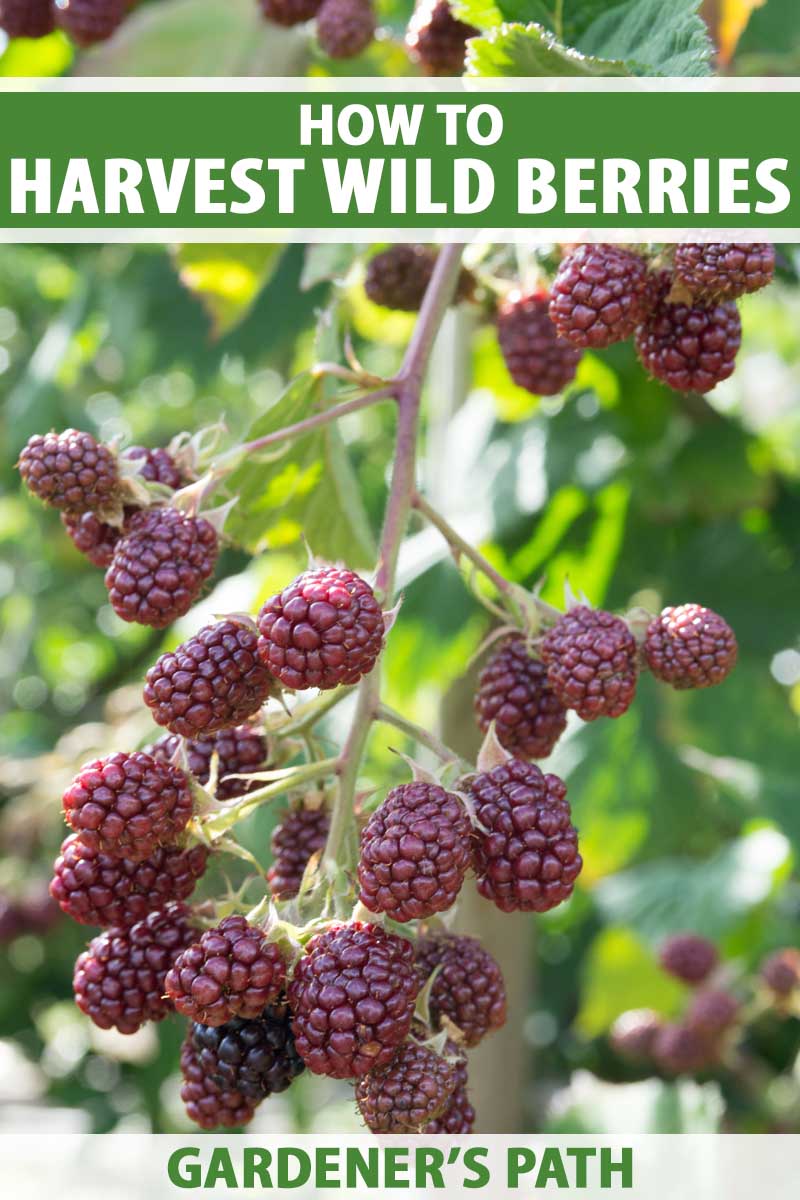
We link to vendors to help you find relevant products. If you buy from one of our links, we may earn a commission.
While completing additional research to triple-check my information and resources, I came to a realization. Although we have plenty of instructional lessons on how to forage for edible plants, there is very little consideration for why we ought to do it.
It’s my goal to break ground on this neglected aspect of wild gathering. Don’t worry, there will be a generous dash of terrible jokes thrown in to keep things fun.
Here’s what’s to come in this guide:
What You’ll Learn
So let’s get to it, and learn about gathering our own wild foods!
Don’t Eat What You Don’t Know
If there’s a number one rule for foraging it is, “Don’t Eat What You Don’t Know.”
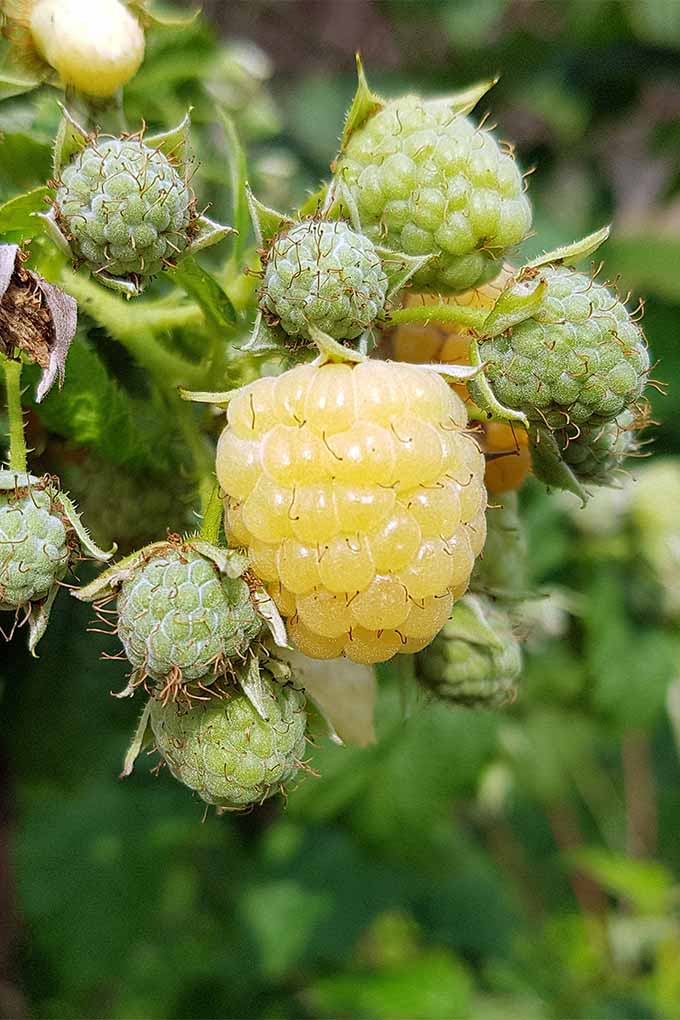
When I visited my brother in Washington state a few years back, I was delighted to discover a patch of golden raspberries. They were growing on a sunny embankment overlooking the Pacific. I reached out and plucked a single berry–
– and my brother slapped it from my hand. “What are you doing?” he asked, “That could be toxic!”
I assured him that I was wholly confident in my identification, then pointed out some of the identifying features I knew to look for. Satisfied, we both enjoyed a handful of delicious, wild-grown golden raspberries on the wooded shores of the Pacific.

The Forager’s Harvest Handbook available on Amazon
My brother’s caution and alarm when eating wild plants is entirely justified. In fact, he was right to stop me and force me to double-check the plant before I ingested a single bit of it. False identification can be a fatal mistake.
This isn’t meant to deter anybody from going berry pickin’. It’s intended to guarantee that you are careful and methodical in your identification. Carry a reputable identification guide with you, and make sure what you’re eating is actually what you think you’re eating.
Become Familiar with the Local Environment
This is an important companion to being positive you’re eating what you think you’re eating.
Edible plants that foragers are eager to find will likely grow in the company of other trees and weeds, and in specific locations like a sunny patch of old farmland. Familiarize yourself with the local ecosystem and you’ll become more adept at spotting not only edible plants, but their likely growing companions.
This broader knowledge has other benefits to it as well. Becoming familiar with local animals and insects can significantly alter your experience in the field.
Suddenly, you didn’t just see a generic bird plucking fruit, you know was a ruffed grouse in its native environment. That white-and-black caterpillar creeping on the goldenrod is a hairy tussock.
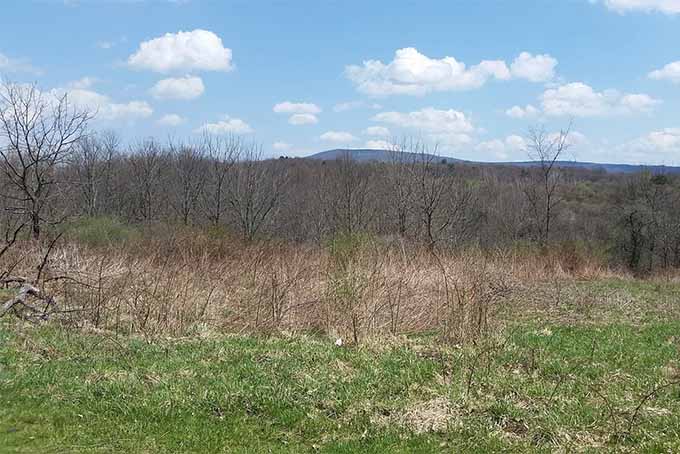
Learning more about the local ecosystem is important for identification, but it also ties you more closely to the outdoors and the experience of foraging. An experience where you may at first feel like an outsider is transformed into one where you feel you are exploring your second home.
It should go without saying that you shouldn’t forage on private property or protected land. This includes nature preserves. Your best bet is always to ask for permission before wandering around somebody’s property.
If you’re venturing into wilder places, check a map or stop by a local ranger station to determine the boundaries of private and public land, and to learn any local rules and regulations.
Watch Out for Hazards!
Any jaunt through through the woods carries a bit of risk, so it’s important to be prepared, and to remain aware of your surroundings.
Make sure you’ve got a trusty set of footwear. Lots of folks swear that full boots are the only way to make it through the forest. I’ve been a lifelong wearer of hiking shoes or something similar for my entire life, and these are always on my feet when I forage.
The important thing here is that you’re wearing something you’re comfortable in. A wide-brimmed hat is handy to keep the sun and the bugs away from your head and neck, and long sleeves and pants are key when traveling through brambles and thick underbrush.
You should always bring some water to drink, and a first-aid kit can be a handy addition to any trip. I usually carry all of my belongings in a backpack with a built-in hydration bladder. It keeps everything in one place and can be used in many situations not limited to the great outdoors.
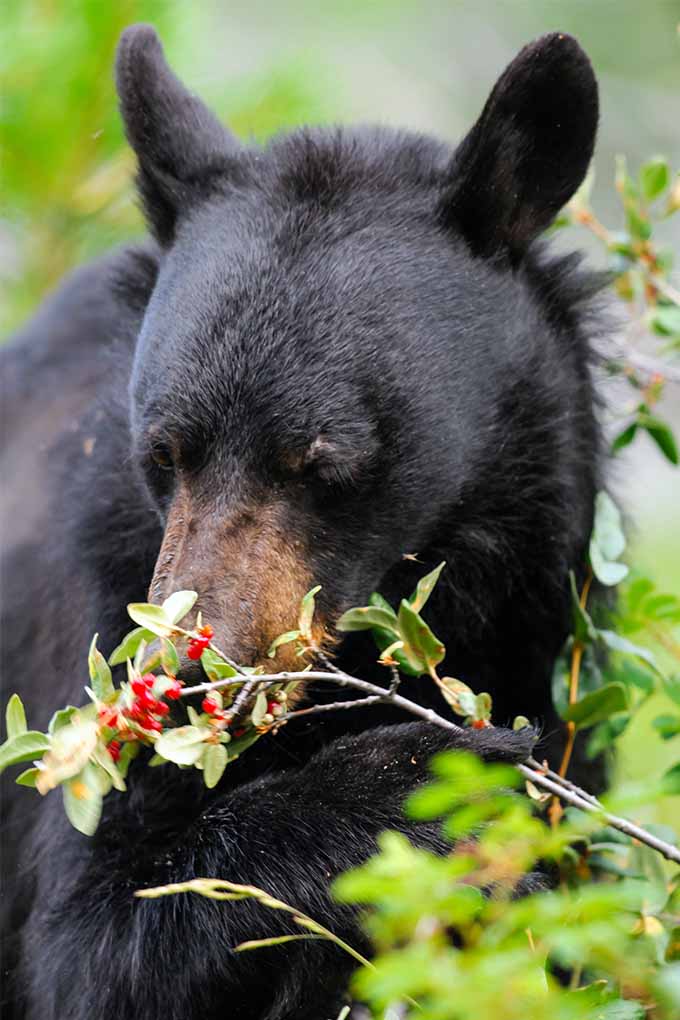
Some extra water and a dry cloth also come in handy so you can wipe or wash away any excess dirt from your finds before sampling them. Bring a basket or sturdy-sided container as well, so you will have something to bring your harvest home in.
Beyond personal protection and comfort, you need to be aware of your surroundings. More often than not, you’ll just encounter a few squirrels or cardinals, but large berry patches can attract bears. Don’t be shy about making a bit of a ruckus when foraging to let the woodland denizens know you’re around.
Watching for hazards isn’t limited to elements that could immediately injure you. We live in a world with dense pockets of pollution. Never eat foraged food that has been treated with a pesticide or is growing out of a pile of garbage. If you aren’t sure, err on the side of caution.
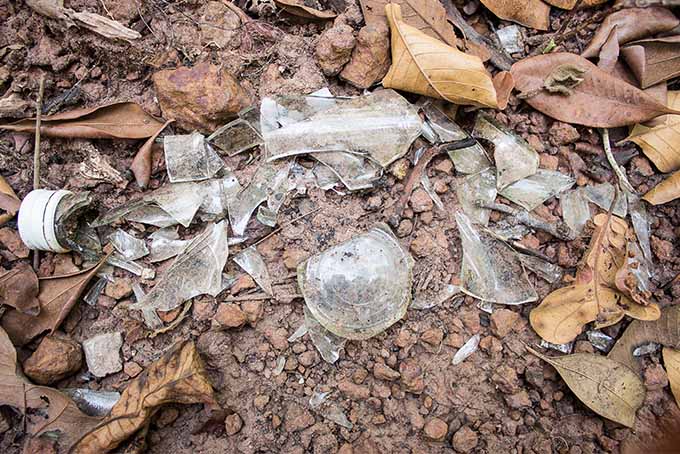
The chemicals and contaminants found in old carpet, motor oil, typical household garbage, and other unsavory refuse can taint an otherwise edible meal. Likewise, there could be other eager diners hanging out near the base of plants, on fruit, and in the nearby area.
Remember to harvest only healthy-looking plants, none with spots, mold, or signs of insect infestation. Think of this as a similar process to what you’d do if you were choosing the best pieces of produce at the farmers market, or picking through the rows in your veggie patch.
You don’t want to eat anything with signs of rot or disease, even if you have positively identified it as the plant you were hunting for.
Leave Some for the Birds
So you’ve found a great patch of black raspberries. Now you can forage to your heart’s content, right?
Wrong.
We can eat our share, but it’s important to remember these food sources are the only ones available to local wildlife. Never pick an area bare of fruit, and don’t return to the same source at frequent intervals. Exhausting these sources of food is just plain bad for everyone.
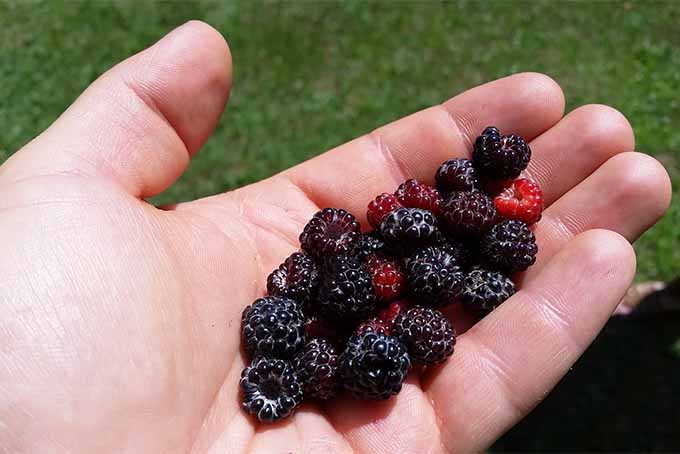
On your walk around the woods, don’t be afraid to scatter a few fruits and seeds around you. This is a handy way of doing your part to spread the plant seeds to new areas. Just remember the story of Hansel and Gretel: that trail may not be there when you return!
(Remember when I said there would be bad jokes…?)
Experimenting with What You Procure
Many plants have doppelgangers that are almost impossible to distinguish between. So what do you do when you’re out foraging and are confronted with this dilemma?
In most cases, you should treat the plant as toxic and move on. Leave the lookalikes up to the more advanced experts.
However, in measured doses, you can administer a few toxicity tests yourself using old-fashioned experimentation. In this case, you’re the guinea pig, so I advise you to read the next section of this guide and proceed with extreme caution.
For instance, some plants have edible leaves but inedible berries, or vice versa. There are several commonly available fruits and vegetables that fit this description – such as rhubarb, with its delicious stalks and poisonous leaves – and they’re relatively commonplace at the grocery store. But you won’t often find rhubarb with its leaves still intact in the produce bins, and this is for a reason.
If you want to check for possibility toxicity in the form of an allergic reaction, there are a few things that you can do. First, rub the plant on an exposed area of your skin (like your arm) and wait a few minutes.
If there’s any sort of irritation, the plant is probably toxic. Examples of irritation are rashes, raised bumps, swelling, and pretty much any sensation that’s uncomfortable.
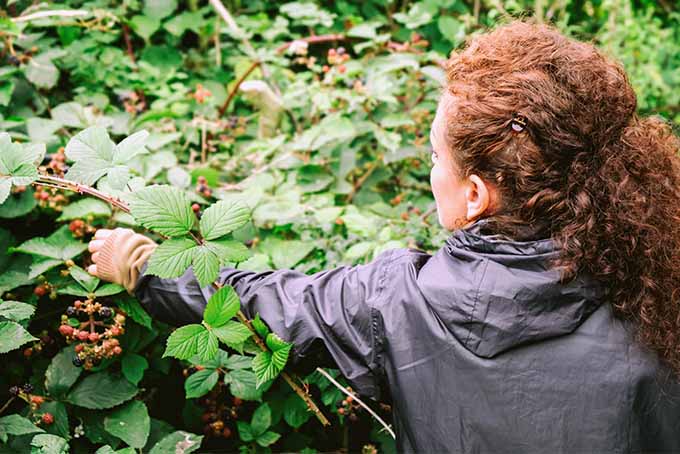
If the plant passes this test, you can rub a bit of what you have deemed to be the edible portions on your lips. Not much, of course! We aren’t applying lipstick here – just a few dabs’ll do. If this causes burning, tingling, or an otherwise uncomfortable sensation, stop where you’re at; the plant is probably toxic.
If the plant in question passes the first two tests, you may try eating a small. Wait for a while, maybe fifteen minutes or more, after you do. If it passes the third test, chances are the plant is edible and nontoxic.
Again, I do not advise doing this if you’re taking a gamble between two plants that look very similar. These tests are not foolproof, and signs of toxicity might not appear until it’s too late, especially in the case of ingesting potentially deadly mushrooms. Instead, administering these tests is actually advisable in all cases where you’re trying something new for the first time.
Even after you’ve confirmed a match against your guidebook (or better yet, with a trusted foraging friend that you’ve brought along on your journey), you need to remember that each of us may react different to new foods.
Though wild edibles may not be toxic, if you’re introducing a new plant that you’ve never eaten before, or that isn’t a common part of your diet, you should proceed slowly and pay attention to what your body is telling you.
Basic Berry Identification
Alright, time for the berries! I picked these as our example foraging specimen because berries are familiar to most folks right off the bat, they’re fairly easily to distinguish and identify, and they’re so darn tasty it’d be a shame not to focus on them.
The following provides a good overview of what you can look for, but you should always use those handy guidebooks to positively identify your finds. All links go to Amazon.
The majority of my experience with foraging is in the northeast. I still use a trusty guidebook to the northeast from Falcon Guides when I am in the field.

Northeast Foraging: 120 Wild and Flavorful Edibles from Beach Plums to Wineberries
I also recommend additional guidebooks in this series, written by expert foragers Leda Meredith, John Slattery, Douglas Deur, Chris Bennett, Lisa M. Rose, or Lizbeth Morgan.
Depending on what region of the US you call home, a guide is available. In this series, these include the southwest, Pacific northwest, southeast, midwest, and the Rockies.
With color photographs and detailed identification descriptions, these books also include tips for gathering, eating, preserving, and planning for future harvests of a variety of edible plants.
They also guide you through each season, so you will know what to look for when in your corner of the country.
Blackberry
Ah, the regal blackberry. The patches of these found growing in old farmland are often impenatrable, and twenty-foot canes can form, covered in piercing prickers.
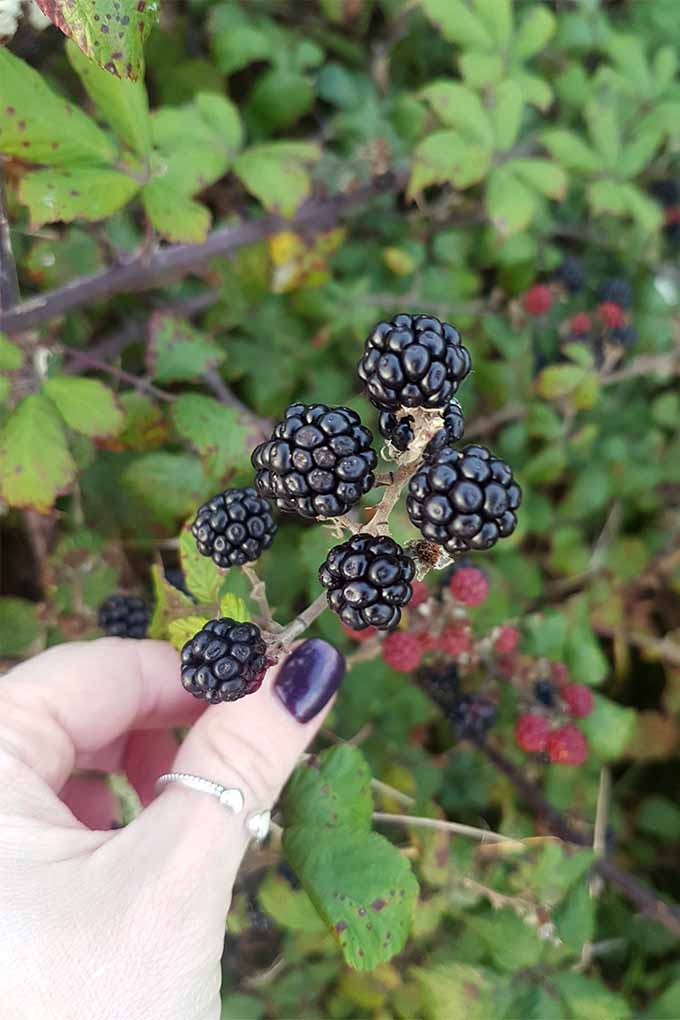
The color of the canes ranges from red to green, and they can produce huge fruits. I can’t eat store-bought blackberries because all I can think is, “Man this is nothing compared to wild ones.” If you’re able to get into the field and eat some of these, you’re going to feel the same way!
Description
Large fruits, some as big as your thumb, form in fruiting bunches. The berries are white or green when forming but ripen to a dark purple or black. Half-developed berries have hints of red mixed in with the purple and are much more tart – these are my favorites.
Watch out when biting! The receptacle, that white core at the center of the fruit, detaches when harvested and remains inside the berry. It can be rather hard, so chew carefully.
Location
You’ll find these in sunny borders of fields and along tree lines. Blackberries can also grow in meadows and fields, and sunny patches in a forest.
When to Go Pickin’
Summer and late summer are the best times to pick blackberries.
Raspberry/Black Raspberry/Thimbleberry
This is my favorite of all the berries, especially the wild black raspberry or black cap.
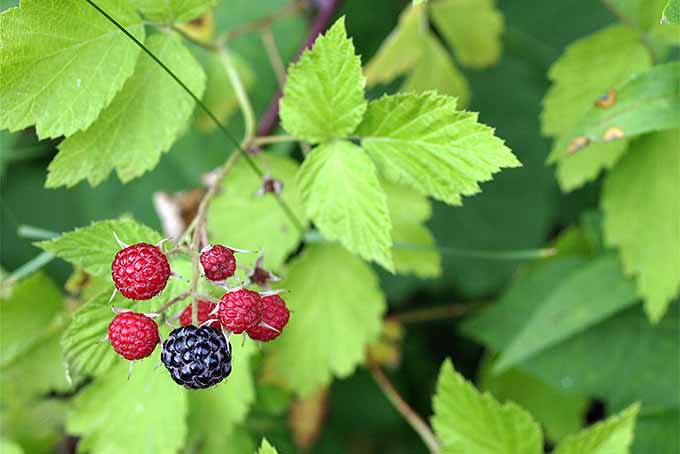
Truly delectable, raspberries can be identified by the white cone, or receptacle, they leave behind after harvest. Regular wild raspberries are best eaten while red and ripe, but I’ve got a soft spot for eating the tart, reddish-purple black caps before they fully mature.
Description
You’ll see a collection of seeds formed around a receptacle that remains attached to the plant after harvesting. Immature berries can be green or white and darken to red when mature, or in the case of black raspberries, a dark purple color.
Location
Raspberries prefer soil that’s rich and full of organic matter. I grew up picking black caps from old farmland and the edges of fallow fields.
Look for leaves that have serrated edges and are a light green underneath. The stems have a white powder on them that can be rubbed off.
When to Go Pickin’
It’s best to scout out a patch in the spring and wait until summer for it to ripen. Watching for changes throughout the season will also help you to solidify identification. Some varieties will produce fruit into the fall.
Blueberry

Ah, the tasty blueberry. This type reminds me of my favorite places in the world, the ridge of the mountain where I grew up. It descends sharply to the Susquehanna River, and all along the rim are scattered blueberries.
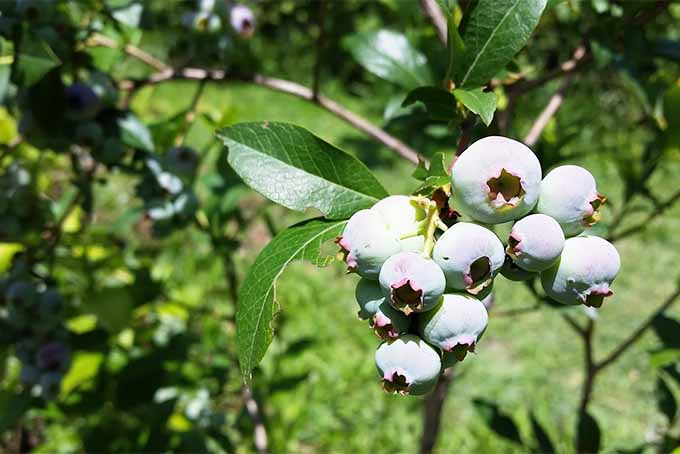
These wild plants thrive in dry and sandy soil so it’s the perfect location. Most are a little plainly flavored, but picking at the right time helps to guarantee a better harvest.
Description
You’re likely find two varieties of blueberries. One is a low-growing, spreading plant that reaches heights of about two feet, and the other is a tall shrub that grows up to 20 feet tall. They’ve got bell-shaped, hanging flowers and warty twigs.
Location
Usually growing in barren soil and acidic locations. Most that I’ve encountered are found in sunny clearings and growing near large rocks and patches of lichen and moss. Often found near oak trees.
When to Go Pickin’
Summer is prime time for blueberry picking.
Strawberry
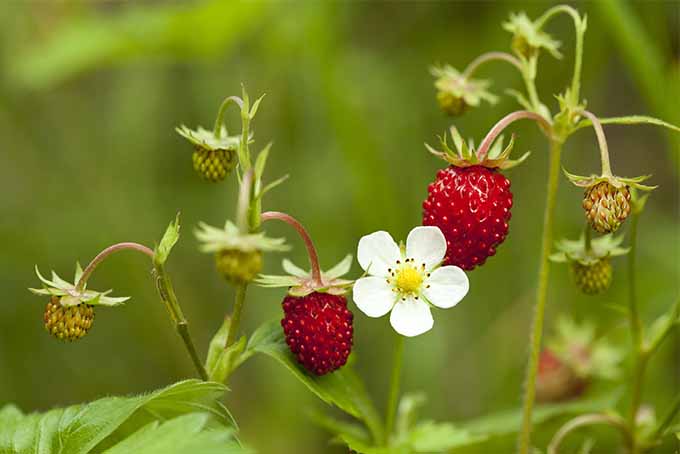
Don’t get mixed up with the false strawberry, that annoying and invasive thing that creeps along your lawn and in your vegetable beds. While edible, the fruit is tasteless and bland.
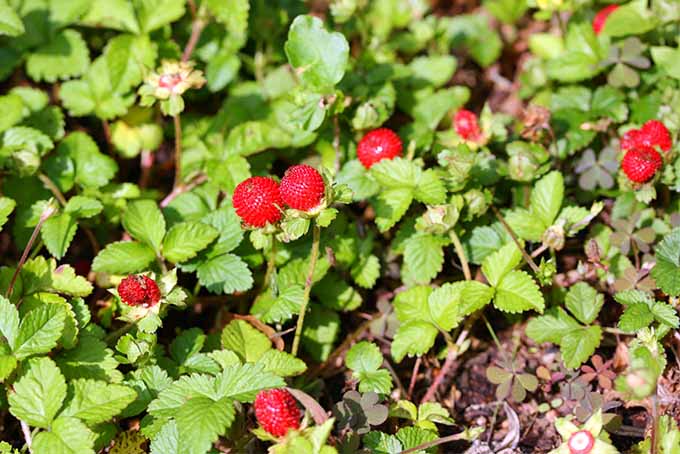
The true wild strawberry tends to grow along streams and riverbanks, and on the ground near treelines and the edge of forests.
Description
Though they look similar, there are several ways to distinguish between true and mock strawberries.
True strawberries have white flowers, their fruit hangs down, and they smell and taste like the store-bought ones we are familiar with (or even better!).
The mock strawberry has fruit that grows and points upwards, does not have a white flower, and tastes like… well, not much. They’re edible, but not very tasty.
Location
Best found in abandoned fields and along sloping embankments that are sunny and moist. Every time I’ve found these it’s been on the side of old trails and roads, near sunny stream beds
When to Go Pickin’
Like most berries, the summer is the best time to pick.
The Why of Gathering
Most gardeners would agree that gardening contributes to a happier, less-stressed life. But time spent in the wild, walking underneath tall trees with the sunshine on your face, is just as beneficial. Heck, even the biting bugs (in small doses) and that feeling you get when you walk through an unexpected spiderweb contribute to making it worthwhile.
That’s because we’re tied to the outdoors and nature, good and bad, for better or for worse. If I’ve got one gift wrapped up inside the tangled bunch of stuff that I am, it is my rapport and sense of connection with the outdoors. We’re a bunch of wild creatures who spend most of our time pent up inside under fluorescent lights – no wonder we’re stressed, angry, and depressed!
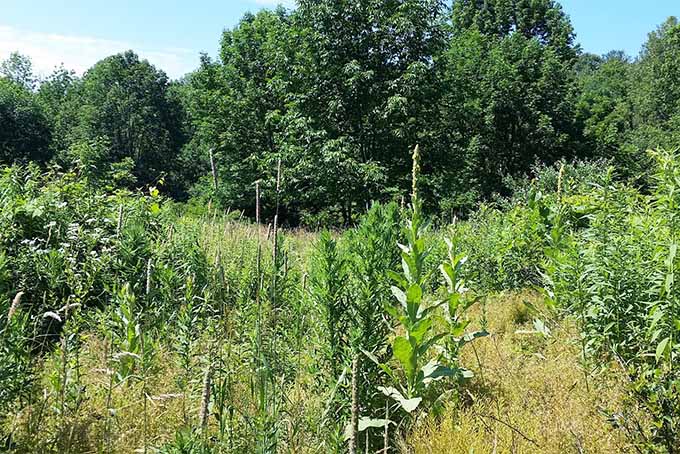
I don’t know if getting outside and into the outdoors is a cure, but it sure does help to alleviate some of the negativity and emotional weight we carry. That’s why it’s important to recognize those birds as what they really are, after you’ve picked a few black caps you discovered on a jaunt through the woods.
When we recognize that it’s a ruffed grouse and a black-capped chickadee in the berry patch with us, we discover the threads holding us and nature together are strengthened. Sharing a few blueberries with the chipmunks and cat birds is a pretty great reminder that we’re all in this together.
Taking the Oath
I’ve prepared a Forager’s Oath for you. It’s good-natured and intended to be a fun way to remember how to gather safely, and to remember why we’re out there in the first place. This could qualify as one of those bad jokes I mentioned…
“I’ll only eat what I sure know,
Have respect for things that grow.
I’ll watch my step and never litter,
Enjoy the sun and ignore Twitter.
I’ll only eat my fair share,
Leaving most for bird and bear.
I’ll open up while I am picking,
And feel full when I’m quitting.
I’ll teach and be encouraging,
When I go a-foraging.”
I hope you’re encouraged to head out the door once the weather turns, and go picking for some berries and other edible plants. Just make sure you’ve got your guidebook with you and that you absolutely, positively identify your target before you chow down.
If you’re looking for more foraging advice, be sure to check out these tips on the enjoyment of dandelions and hunting wild morels and other mushrooms on our sister site, Foodal.
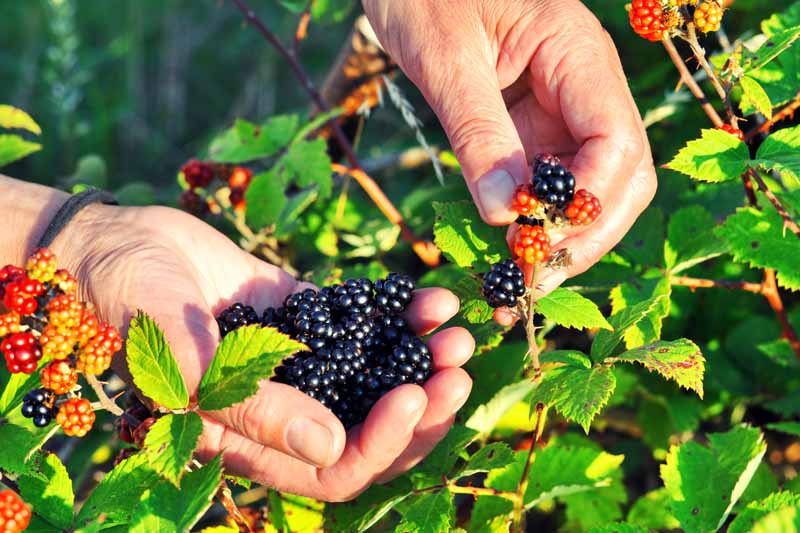
Getting the kids into the garden is an excellent method for encouraging them to spend their days outside, but also consider taking them on a berry hunt. If you eat a few berries and decide you want some more, our guide to starting up a vegetable garden is appropriate for planning a berry patch too!
For even more berry lovin’, you’ll also enjoy our articles on growing mulberries, elderberries, and our fall berry planting guide.
Thanks for reading, and leave your comments for us to enjoy below. Now get out there and start foraging!
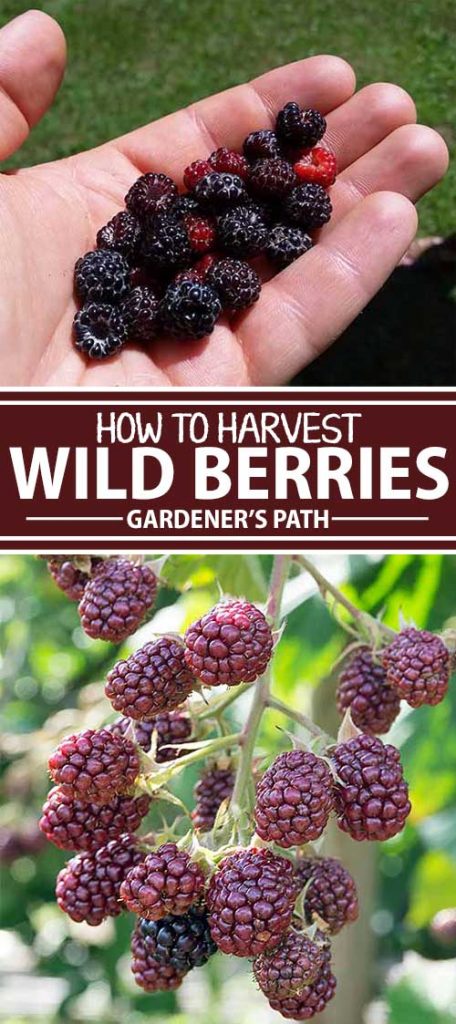
This was an amazingly insightful read. The nature in which you communicated your knowledge was heart warming and filled with passion. Thank you very much for sharing
Thanks for reading, Sarah, I appreciate your comments very much. Knowing what I wrote was as warmly received as it was written makes the whole process worthwhile, so thank YOU!
Hi,
Have been berry picking in my neighborhood all week. Fresh berries and yogurt for breakfast each morning. Such a joyful time during COVID. Thank you Mother Nature for your bounty.
Very Interesting, I didn’t Know Rhubarb Leaves weren’t edible (only Stalks are), thanks for teaching me something new! Good Point about just being outside in Nature. It’s like therapy. Foraging and Gardening are one in the same honestly. The Lines between the 2 blur often. I find these lines funny I’ll only eat my fair share, Leaving most for bird and bear. Why tho? It’s not like the animals are going out their way to only eat their fair share and save you some. I’ve seen Deer, Birds, Ground Hogs and Squires happily strip all the berry Bushes and Fruit… Read more »
Where the ethics of foraging are involved, some might argue that it largely comes down to the fact that we have a choice. We know that if we overharvest or tear plants up by the roots, they won’t be there to harvest from again, or for any other hungry creatures to benefit from. Some animals will gorge themselves or overharvest to save up for the winter, occasionally killing plants as well. But the destruction caused by humans involved in foraging or wildcrafting with no regard for these wild plants as renewable resources is typically far more harmful and lasting. Planting… Read more »
This is a fantastic article Matt!! Thank you so much. I do alot of foraging myself. Definitely helps the emotional, depressional things life can throw at a person. Thank you. The world needs more people like you in it, that’s for sure!!! Good day
Thanks for reading and taking the time to comment Michael!